Your Guide to Construction, Renovation, and Zoning Laws in California
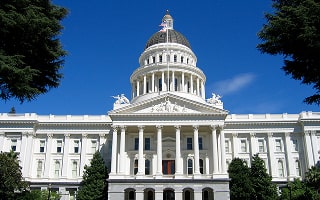
Regardless of where you build or renovate, you are subject to dozens of laws you may not know about. California has 12,214,549 housing units and some of the country's strictest zoning and building regulations. Before you hit the "go" button on your next building or renovation project, be sure to brush up on the specifics.
Property-related laws fall into two general categories: state-level and local (town/city/county/municipality). Each state divides property law responsibilities between these two entities; some laws fall to the state and others to local government, sometimes they overlap. Under each main category, there are many different rules and regulations to review.
State Level (Regulations & Codes)

California's building and property codes are collectively outlined in Title 24 of the California Code of Regulations, known as the California Building Standards Code. This code is a comprehensive set of regulations that govern the design, construction, and renovation of buildings across the state.
Title 24 is made up of specific targeted rules for building, renovating, and structural standards. The highlights are as follows:
-
California Building Code (CBC): The CBC is a large section of Title 24 covering general building design and construction requirements. It also addresses fire and life safety, structural integrity, and accessibility.
-
California Residential Code (CRC): The CRC focuses specifically on one and two-family structures (including townhouses up to three stories high).
-
California Green Building Standards (CALGreen): CALGreen mandates green building standards for new construction and renovations, focusing on energy efficiency, water conservation, and environmental quality issues.
-
Other Sections: Title 24 also includes codes for electrical, mechanical, plumbing, energy, historical buildings, existing buildings, and referenced standards.
Construction
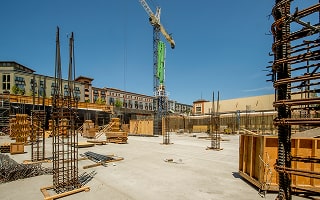
California's construction laws cover a wide range of topics, including licensing, workers' compensation, safety standards, and public works requirements. Key areas include ensuring contractors are properly licensed, addressing construction defects, and adhering to public works regulations.
The California Building Standards Commission (CBSC) is responsible for developing and updating the building standards. These laws are updated regularly and posted publicly. Local governments are mandated to enforce these state building standards, or they can create local ordinances that are at least as strict.
Some of the key construction laws in California include:
-
Workers' Compensation: All California contractors are legally required to have workers' compensation insurance for their employees. If they do not have employees, they must secure a certificate of exemption.
-
Construction Defects: The Right to Repair Act protects homeowners from construction defects, and the statute of limitations for filing claims varies depending on the type of defect.
-
Prompt Payment: California law requires prompt payment for construction work with strict deadlines for progress payments and retainage.
-
Home Improvement: California has specific regulations regarding home improvement contracts, including limits on down payments and payment requests.
-
Accessory Dwelling Units (ADUs): California has relatively new regulations for constructing ADUs, including minimum height limits.
-
Climate Change: The entire California construction industry is subject to regulations to address climate change and reduce our carbon footprint.
-
Freelance Worker Protection Act (FWPA): FWPA establishes baseline standards for contracts between freelance workers and private employers, entered into or renewed on or after January 1, 2025.
Commercial Structures

California requires contractors to be licensed, and penalties exist for working without a license. The Contractors State License Board (CSLB) licenses and regulates contractors. The CSLB also oversees all commercial construction projects, ensuring that they comply with state regulations. Local jurisdictions also play a role by enforcing the California Building Standards Code during construction.
California has strict safety regulations for construction sites, including requirements for personal protective equipment, safety training, and adherence to Cal/OSHA standards.
Residential Structures

The California Contractors State License Board (CSLB) also oversees residential construction while licensing and regulating contractors to protect consumers and ensure construction quality. This board also investigates customer complaints and may take disciplinary action against licensed or unlicensed contractors for violating the Contractors State License Law. Their primary goal is to protect the public.
Along with the CSLB, the California Building Standards Commission (CBSC) and the Department of Housing and Community Development (HCD) are also involved in setting and enforcing building standards. The HCD, in particular, focuses on housing construction standards.
Some local building departments, like those in Palmdale and Saratoga, are responsible for enforcing state and local building codes within their jurisdiction. To that end, they issue permits, review building plans, and conduct inspections.
For certain types of construction projects, such as public schools or healthcare facilities, other agencies, such as the Division of the State Architect (DSA) and the Department of Health Care Access and Information (HCAI), also get involved.
Safety Standards

Construction companies must comply with Cal/OSHA regulations found in Title 8 of the California Code of Regulations. These safety standards include items like fall protection, personal protective equipment (PPE), hazard communication, scaffolding safety, and electrical safety.
The State of California Department of Industrial Relations has detailed specifications for these safety standards, along with dozens of others. Some of the areas of focus included in the page above are:
- Stairways and Ladders
- Construction Hoists
- Ramps, Runways, and Stairs
- Asbestos
- Lead
- High Voltage Warning
- Blasting Accidents
- Explosives
- Excavation
- Masonry
Building Codes

The California Building Standards Commission states that "The California Building Standards Code is a compilation of three types of building standards from three different origins:
- Building standards that have been adopted by state agencies without change from building standards contained in national model codes;
- Building standards that have been adopted and adapted from national model codes to address California's ever-changing conditions; and
- Building standards, authorized by the California legislature, that constitute amendments not covered by national model codes, that have been created and adopted to address particular California concerns".
Asbestos Laws

According to Title 8 §341.6, Registration Requirements: Contractors who work with asbestos must obtain a registration permit before starting work. The registration is valid for one year after issuance. The law contains a lot more detail, which you can read about using the link above.
Contractor Licensing Laws

Most contractors doing construction or renovation work must be licensed by the California Contractors State License Board (CSLB). This is especially true for projects (labor and materials) costing more than $500. There are various types of licenses, and contractors need specific ones for particular projects.
Before becoming licensed by the CSLB, contractors must have four years of journeyman-level experience, pass exams (trade and law), and provide proof of bonding and insurance. The only exceptions to this rule are some owner-builders who do work for themselves on their own property.
Insurance & Bonds
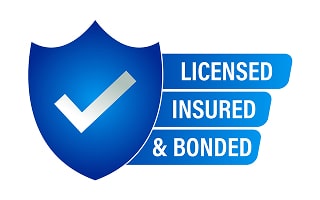
In California, licensed contractors must have general liability insurance, with a minimum coverage of $1 million per occurrence and $2 million aggregate for bodily injury and property damage liability. Additionally, contractors must have a $25,000 contractor license bond. Depending on their business structure, some contractors may also need higher amounts for other bonding requirements.
Additionally, for commercial construction vehicles, the owner must have a minimum auto liability of $30,000 per person, $60,000 per accident for bodily injury, and $15,000 for property damage in California.
Public Works Contracts/Public Bidding

California's public works construction laws are designed to ensure fair labor practices, an equitable bidding process, and protection of public funds on construction projects paid for, entirely or partially, by public entities. These laws cover various aspects, including prevailing wage requirements, apprenticeship requirements, bidder registration, and competitive bidding procedures.
Public works projects involve the construction, alteration, demolition, installation, or repair of any public structure, building, road, or other public improvement, performed under public contract and paid for out of public funds.
Some of the highlights of public works law in California are:
-
Prevailing Wages: Workers on public works projects must be paid at least the prevailing wage rates for the specific type of work and location.
-
Apprenticeship Requirements: Projects over $30,000 must meet apprenticeship requirements, which include hiring a certain percentage of apprentices in various trades.
-
Contractor Registration: Contractors and subcontractors must register with the Department of Industrial Relations (DIR) to bid on or work on public works projects.
-
Competitive Bidding: Public works projects must be competitively bid to prevent favoritism, fraud, and corruption.
-
Bid Security: Bid security, in the form of a bidder's bond, is required for contracts over a certain threshold, typically 10% of the bid amount.
-
Payment and Performance Bonds: Performance bonds protect the public agency in case of contractor default, while payment bonds protect subcontractors and suppliers.
-
Certified Payroll Records: Contractors must maintain and submit certified payroll records to the DIR, demonstrating compliance with prevailing wage and apprenticeship requirements.
-
Retainage: Public agencies can withhold a percentage of payment as retainage, up to a maximum of 5%, before project completion and acceptance.
-
Subletting and Subcontracting: Contractors must ensure that subcontractors are registered public works contractors and comply with prevailing wage and other applicable laws.
The California Department of Industrial Relations (DIR) and the State Public Works Board (PWB) oversee public works projects in California. The DIR focuses on enforcing labor laws, including prevailing wages and apprenticeship requirements, while the PWB handles fiscal matters for state-funded projects.
Renovations

The California Existing Building Code (CEBC) governs renovations, additions, and alterations to existing buildings. Since each renovation project is different, the scope of compliance will vary.
Some of the laws regarding renovations involve protection of adjoining property (Section 1502), means of egress (Section 1505), fire extinguishers (Section 1504), and accessibility (Section 1508). Some additional laws to be aware of include:
- Written Contract: All jobs over $500 must include a written contract between the contractor and property owner.
- Contractor Licensing: Contractors must be licensed by the Contractors State License Board (CSLB) and specifically hold a B-2 license for residential remodeling.
- Payment Schedule: The contract must outline a detailed payment schedule, and payments should not exceed the value of the work performed.
- Change Orders: Any changes to the contract, including price or scope of work, must be documented in writing through a signed change order.
- Right to Cancel: Homeowners have a limited right to cancel the contract, and the contract must clearly state this right.
- Permit Information: The contract must specify who will obtain the necessary permits.
- Scope of Work: The contract should clearly define all the work to be performed.
- Start and End Dates: The contract must include the start and end dates for the project, although these may change during construction.
- Insurance Information: The contract should include the contractor's insurance coverage details.
- Warranty Information: The contract should detail any warranties the contractor offers for labor and materials.
- Time and Material Contracts: Time and material contracts are generally not permitted for home improvement projects in California.
- Balcony Work: California has laws related to balcony inspections, especially for multifamily dwellings.
- Tenant Displacement: Laws address tenant displacement during substantial remodeling projects, especially those requiring permits. In California, landlords can evict tenants during "substantial remodels", but the tenants have the right to reoccupy if the remodel is not completed. The landlord must give the tenant proper notice and assist with relocation.
- Unlicensed Handyman Work: Work done by unlicensed handymen must be "casual, minor, and inconsequential".
- Substantial Remodel: A substantial remodel requires a permit and includes the replacement or modification of structural, electrical, plumbing, or mechanical systems.
California renovation laws also include sections for claims, retention, bonds, indemnity, arbitration, liens, stop notices, and contract termination.
Environmental Laws

California's Green Building Standards (CALGreen) mandates laws for new construction and renovations designed to promote energy efficiency, water conservation, and environmental concerns related to construction. California was one of the first states to mandate green building initiatives and developed its first green building laws in 2007. Since then, they have added many new regulations.
The most recent version, 2022, includes mandatory provisions for commercial, residential, and public school buildings, plus hospitals, and some voluntary provisions.
Some highlights of this law include:
- Section 301 talks about nonresidential additions and alterations that require new plumbing fixtures, waste diversion, and minimum rehabilitated landscape area requirements.
- Section 302 is about mixed-occupancy buildings, phased projects, and voluntary tiers.
- Section 4.106 on site development states, "Preservation and the use of the available resources shall be accomplished through evaluation and careful planning to minimize negative effects on the site and adjacent areas. Preservation of slopes, management of storm water drainage, and erosion controls shall comply with this section".
- Section 4.303 deals with water energy efficiency and using plumbing equipment that complies with 4.303.1.1, 4.303.1.2, 4.303.1.3, and 4.303.1.4.
- Section 4.303.1.1 talks about toilets that conserve water when flushing.
- Section 4.501 deals with clean air and minimizing contaminants that could damage air quality. Some of the topics include fireplaces, pollutant control (including materials for flooring, plumbing, and adhesives), and interior moisture control.
Solar Regulations

The California Building Energy Efficiency Standards (Energy Code) have solar photovoltaic (PV) systems and solar-ready requirements. These laws apply to newly constructed low-rise residential buildings. Solar-ready laws are mandatory requirements applicable to buildings that do not have solar PV systems installed. When the structure is built to be solar-ready, contractors must use the applicable Energy Code requirements to prepare the building for future solar energy system installation.
The Warren Alquist Act

The Warren Alquist Act established the California Energy Commission in 1974 and provided it with the authority to develop and maintain the Building Energy Efficiency Standards (Energy Code). This Act also requires the CEC to update the code every three years, and it must be cost-effective over the building's economic life. One of the goals of this Act is to enable pathways for all-electric buildings, help reduce residential building impacts on the energy grid, and promote demand flexibility and self-utilization of solar photovoltaic (solar PV).
Some highlights of the California Energy Code are:
- Heat Pump Baselines
- Solar and Battery Storage
- Ventilation Requirements
- Lighting
- Multifamily Restructuring
- No Trade-Offs
- Minimum Efficiency Requirements Must Be Met
Solar Installation Incentives
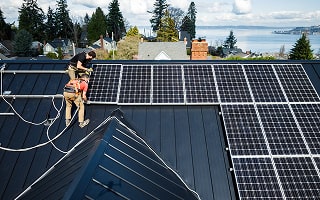
Federal solar incentives offer homeowners a 30% tax credit on the total cost of a solar system, including equipment, labor, and permits. This credit is non-refundable, meaning it can't exceed your tax liability, but any unused portion can be carried forward. The tax credit also covers adding battery storage to your solar system.
California offers additional solar system incentives such as:
-
Self-Generation Incentive Program (SGIP): The SGIP provides rebates and incentives for clean energy technologies, including solar, for customers of major utilities like PG&E, SCE, and SoCalGas.
-
Net Metering: California has a generous net metering program, allowing homeowners to receive credits on their utility bills for excess solar energy they send back to the grid.
-
Property Tax Exclusion: California provides a property tax exemption for the value added by installing a solar system on your home, protecting homeowners from increased property taxes. This exemption is available for systems installed between 1999 and June 30, 2026.
-
Local Rebates: Some cities and municipalities offer additional rebates or incentives in addition to the state and federal programs.
-
Disadvantaged Communities: Single-family Solar Homes (DAC-SASH): This program offers incentives for low-income households in underprivileged communities.
-
Low-Income Weatherization Program (LIWP): Provides solar photovoltaic (PV) systems and energy efficiency upgrades at no cost to eligible low-income households.
Gas/Oil

California's building codes related to gas and oil storage and handling are primarily found within the California Building Standards Code (Title 24), specifically the California Fire Code (Part 9) and the California Mechanical Code (Part 4). These codes include provisions for fire safety, fuel-fired appliances, and storing and handling flammable and combustible liquids.
Some highlights for California Building Standards Code (Title 24) regarding gas and oil are as follows:
-
California Fire Code (Part 9, CFC): This code addresses fire safety, including the storage, handling, and use of hazardous materials and devices. It includes regulations for flammable and combustible liquids, fuel-fired appliances, and fire protection systems.
-
California Mechanical Code (Part 4, CMC): This code covers the design, installation, and operation of mechanical systems, including fuel-fired appliances and systems.
-
California Plumbing Code (Part 5, CPC): This code includes regulations for fuel gas piping, which is relevant to installing gas-fired appliances like fireplaces and heating systems.
-
California Building Code (Part 2, CBC) and California Residential Code (Part 2.5, CRC): These codes provide general building requirements, including fuel gas piping and appliances.
Some key highlights of California Gas and Oil Building Codes are as follows:
- Fuel-fired Appliances: The California Fire Code and California Mechanical Code regulate the installation and operation of nonportable fuel-fired appliances like furnaces, boilers, and water heaters, ensuring they are safe and properly vented.
- Flammable and Combustible Liquids: The California Fire Code outlines requirements for the storage, handling, and use of flammable and combustible liquids, including tank requirements, spill containment, and separation from other building areas.
- Fuel Gas Piping: The California Plumbing Code and related sections in the CBC and CRC specify requirements for fuel gas piping, including material, installation methods, and safety measures.
- Oil Tanks: The California Fire Code includes regulations for storing fuel oil tanks, including location, separation from other areas, and spill containment.
- Marine Oil Terminals: The Lempert-Keene-Seastrand Oil Spill Prevention and Response Act, implemented through the California Fire Code (Part 9), regulates marine oil terminals to protect public health, safety, and the environment.
- Green Building Standards (CALGreen): While not directly focused on gas and oil, the CALGreen code promotes energy efficiency and reduces greenhouse gas emissions, indirectly impacting the use of fossil fuels in buildings.
- Local Ordinances: Local governments can adopt ordinances that are more restrictive than the state building codes, so it's essential to check with local authorities for specific requirements in a particular area.
You can find more information about specific laws regarding buildings and the use of gas and oil by visiting the California Building Standards Commission (CBSC) website, the California Fire Marshall website, California's Energy Commission, or even local building departments. You will find the links to all these agencies further down this page.
Electricity

California's electricity building codes are included in the California Energy Code (Title 24, Part 6), they are part of the state's broader Building Standards Code (Title 24). The California Energy Commission (CEC) manages and updates these codes every three years. These laws aim to promote energy efficiency, reduce greenhouse gas emissions, and achieve the state's renewable energy goals.
Some of the highlights of California's electricity code include:
-
Energy Efficiency Standards: The code sets minimum standards for reducing energy consumption in both residential and nonresidential buildings. It also provides solutions for making buildings more comfortable, lowering energy costs, and reducing greenhouse gas emissions.
-
Focus on Electrification: The 2025 Energy Code emphasizes the use of electric appliances and includes measures for integrating solar energy and encouraging the adoption of advanced building technologies.
-
Specific Requirements: The code includes detailed requirements for electrical installations, such as wiring methods, equipment installation, grounding, bonding, and electrical safety, based on the National Electrical Code (NEC) with California-specific amendments.
-
Climate Zone Variations: The standards consider California's 16 different climate zones, ensuring that energy efficiency measures are appropriate for each area's specific conditions.
-
Residential Focus: For single-family homes, the 2025 Energy Code requires heat pump space heating for compliance and introduces requirements for fault indicator detection (FID) systems.
-
Commercial Focus: The code includes regulations for commercial kitchens, such as establishing electric-ready requirements and updating assembly-building solar and storage standards.
-
Local Enforcement: Local city and county agencies are responsible for enforcing compliance with the code's provisions.
Updates to the California 2025 Energy Code go into effect January 1, 2026. These changes include significant updates to energy efficiency and electricity laws. The California Energy Commission's website has tremendous information regarding these updates and contains dozens of fact sheets and updates.
Government Housing Programs
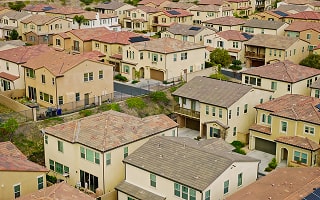
California is very progressive regarding government-supported housing programs that help low and very-low-income households. These programs help people become homeowners, provide rental assistance, and address homelessness.
The CalHome Program provides grants to local agencies and nonprofits to assist with first-time homebuyer and housing rehabilitation efforts, homebuyer counseling, and other technical assistance for low-income households.
The CalWORKs Housing Program, managed by the California Department of Social Services (CDSS), was designed to foster housing stability for families at risk of homelessness or experiencing homelessness who are also participating in the CalWORKs program. It offers financial assistance and other support services, including rental assistance, housing navigation, and more.
California Housing Finance Agency (CalHFA) Programs
- MyHome Assistance Program: This program provides deferred-payment junior loans for down payments and closing costs.
- CalPLUS FHA & CalPLUS Access FHA Programs: These are FHA-insured first mortgages with a slightly higher interest rate, combined with programs for closing costs or down payment assistance.
California also offers a Housing Voucher Program (HVP) and other incentives to help low-income families find shelter.
Property Tax Credits and Incentives
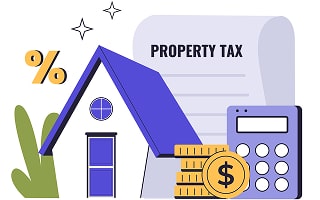
California offers property tax credits and incentives to support affordable housing efforts and encourage homeownership. They are as follows:
-
Homeowners' Exemption
This exemption reduces the taxable value of a primary residence by $7,000. To claim the exemption, homeowners must file a form with their county assessor. The form is available from the county assessor and must be filed by February 15th to receive the full exemption for that year.
-
Low-Income Housing Tax Credit (LIHTC) Program
The LIHTC program incentivizes the development and preservation of affordable rental housing. It provides dollar-for-dollar tax credits to owners and developers of properties, who then lease a portion of their units to low-income households at reduced rents. California has its own state LIHTC program and participates in the federal LIHTC program. The program helps finance the construction, rehabilitation, or acquisition of affordable housing units. Projects must maintain their affordable status for at least 30 years under federal law, and California generally requires a 55-year extended use period for 9% tax credit projects.
-
California Earned Income Tax Credit (CalEITC)
Some individuals can take advantage of this credit, which can provide working families and individuals with a tax refund of up to $3,644.
-
Affordable-Housing Regulations
California uses the 30% rule, meaning that housing is considered affordable when a household spends 30% or less of its income on housing. This includes rent, utilities, property taxes, and insurance for owner-occupied homes. The state also uses a system of income limits, based on the Area Median Income (AMI) percentages, to define different low-income categories like very low income, low income, and moderate income.
Many housing developments in California are often deed-restricted, meaning the units are legally restricted to occupancy by low-income households for a specific period, usually 55 years. Some have a mix of market-rate, moderate-income, and low-income housing. California uses the Section 8 program to assist low-income families with housing.
California is building 1 million new affordable homes for low-income households by 2030 and 2.5 million by 2050.
Local Level (Permits and Regulations)
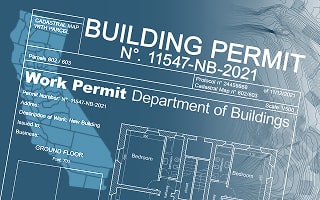
Local building codes for new construction and renovations are based on the California Building Standards Code (Title 24), which contains minimum standards. Cities, towns, counties, and other jurisdictions can enhance these rules to provide more stringent laws about building in the area, but they cannot weaken them. Title 24 was built on the foundation of the International Building Code and the International Residential Building Code.
Local building departments enforce Title 24 rules and their own building codes within the jurisdiction. They do this through building permits, inspections, and handling complaints about building code violations.
Local building codes are changed frequently and often have effective dates that are important to know about. Some examples of local building regulations in California include:
-
Structural Integrity: Building codes require structures to be built strong enough to withstand forces like wind, earthquakes, and snow.
-
Fire Resistance: Buildings must have fire-resistant materials and safety features, like sprinklers, smoke alarms, and fire escapes.
-
Energy Efficiency: California has strict energy codes for buildings to reduce energy consumption.
-
Accessibility: Buildings must be accessible to people with disabilities, with features like ramps and accessible restrooms.
-
Green Building Standards: California has a green building code (CALGreen) to promote sustainable building practices.
Certain types of work, such as minor repairs or small structures, may not require a building permit.
Building-Friendly Areas of California

Some areas of California are easier to build in than others. Typically, cities, towns, and counties with pro-housing initiatives, favorable Accessory Dwelling Unit (ADU) laws, or less restrictive zoning laws make it easier to build new homes.
Some examples include:
- Sacramento: Sacramento has been declared "pro-housing" and has policies that make it easier to build than other Californian cities.
- San Diego: San Diego has no development and impact fees, allows building above garages without setback requirements, and even allows building on the property line in some cases.
- Los Angeles: Los Angeles is known for its favorable regulations for ADUs, strong rental markets, and significant investment potential.
- Stockton: Stockton offers ample opportunities for new construction homes, particularly those seeking a balanced lifestyle with natural beauty.
- Irvine: Irvine is known for its master-planned communities, top-tier educational institutions, and a thriving business environment, making it a desirable location for new construction homes.
- Roseville: Roseville is considered a prime location for new construction homes due to its strong economy, top-rated schools, and thriving communities.
- Victorville: Victorville is regarded as one of the most business-friendly cities in Southern California, and its zoning laws make it a desirable place to build.
Where to Obtain California Building Permits
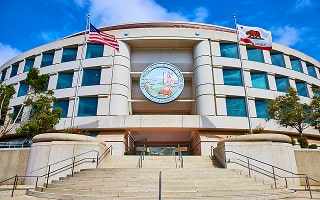
You must obtain a building permit before building, renovating, or demolishing a structure in California. You can get one from the local city or county building office. There are various types of permits depending on the work being done. For example, if you put in a driveway, you would acquire a grading permit.
In the city of Los Angeles, you would visit the Los Angeles Department of Building and Safety (LADBS) to get a permit. The city offers a robust website where you can apply for permits online, check the status, and even schedule inspections. You could also visit the office in person to apply. When applying, be prepared to pay a fee (typically around $1,200) and submit supporting documentation like blueprints, material lists, and your contractor's license and insurance details. You can obtain a building permit usually in a few weeks, but some take months, depending on the project's complexity and backlog of applications.
Some links to other building departments in California include:
- San Diego Development Services
- San Francisco Permit Center
- California City Building Department
- San Jose Building Permit Services
- Bakersfield Building Permits
- Palmdale Building and Safety Department
- Fresno Public Works Portal
- Sacramento Building Permits and Inspection
- Palm Springs Building Safety Department
During the permitting process, the building inspector must come out and review the work being performed. They may do this before, during, and after the project to ensure the work complies with all local building codes to keep people safe. You can call, schedule online, or email the building office to schedule inspections. In Long Beach, CA, you can even check the daily schedule to see if you are on it.
Zoning Laws
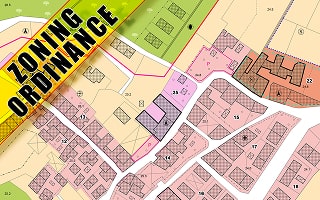
California zoning laws dictate land use and determine how property can be used throughout the state. For starters, zoning designates specific areas into categories like residential (single-family, multi-family, etc.), commercial (retail, office, etc.), industrial (manufacturing, warehouses), and mixed use, which may contain a combination of those types above.
Local authorities develop and enforce local zoning codes dictating what types of structures can exist where. A large percentage of California's land is zoned for single-family homes, which can restrict the development of denser housing types like apartments or townhouses. This has an adverse effect on housing and limits affordable housing for low-income families.
California's zoning laws are complex, with wide variations between cities and counties in the same area. Some specific nuances are as follows:
-
Single-Family Zoning: California has historically had single-family zoning, but recent state legislation like SB 9 allows for the construction of up to four units on single-family lots in many areas.
-
Accessory Dwelling Units (ADUs): California mandates that localities permit ADUs with only the briefest approval on residential lots with existing single-family homes.
-
Density Bonuses: California law requires jurisdictions to offer density bonuses and development incentives to developers proposing affordable housing.
-
Building Height Restrictions: Cities set maximum building heights in various zones, with downtown and commercial zones often allowing for taller structures than single-family residential areas.
-
Setbacks: Setbacks dictate the minimum distance a structure must be from property lines, often varying by location (front, side, or back).
-
Lot Size and Coverage: Zoning laws define minimum and maximum lot sizes and the percentage of a lot that structures can cover.
-
Environmental Protections: Properties in areas like coastal zones or those with protected wildlife may have additional environmental regulations.
Related Links and Enforcement Offices

Many different government agencies standardize, regulate, and enforce building codes and property laws. In the state of California, sometimes these agencies overlap with similar areas of focus. More information on construction, renovation, and building regulations and standards is below.
-
State Housing Law: The State Housing Law, implemented by the California Department of Housing and Community Development (HCD), establishes statewide residential building standards for new construction. These standards are found in the California Code of Regulations, Title 24.
-
California Green Building Standards Code (CALGreen): CALGreen promotes environmentally friendly construction practices and reduces negative environmental impacts.
-
Local Ordinances: Local zoning ordinances can vary significantly between cities and counties in the same area.
-
Senate Bill 9 (SB 9): SB 9 eased restrictive zoning laws in California, allowing for the creation of up to four units on single-family lots without local approval.
-
Building and Development Regulations: Zoning laws often dictate building height, lot coverage, and setback requirements, influencing how a property can be developed.
The links below provide detailed information on the state's rules governing construction, zoning, renovating, and housing.
Other Helpful Links
- California Building Standards Commission (CBSC)
- California Contractors License Law & Reference Book
- California Department of Industrial Relations
- Contractors State License Board (CSLB)
- Department of Housing and Community Development (HCD)
- Division of the State Architect (DSA)
- Department of Health Care Access and Information (HCAI)
- State Public Works Board (PWB)
- California Fire Marshall
- California Energy Commission
- California Department of Social Services